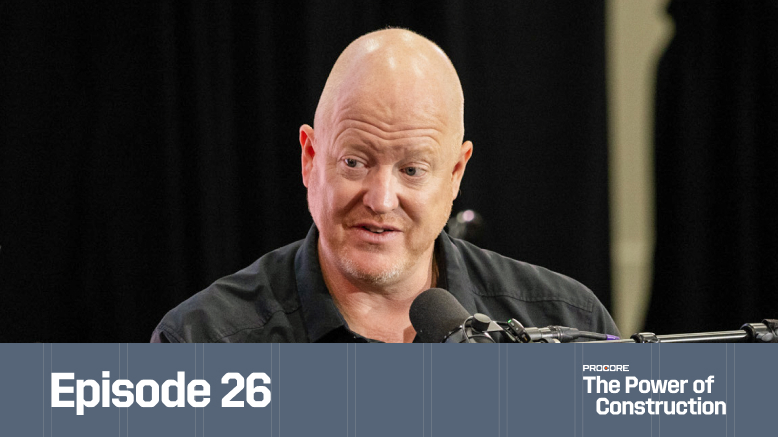— 17 min read
The Construction Buyout Process Explained


Last Updated Aug 13, 2024

Colton Stokwitz
Program Manager
Colton Stokwitz is a Program Manager at Shoreline CPM. Based in San Diego, Colton spent 11 years working as a project controls manager, lead interior superintendent and senior cost analyst at Turner Construction. He has a Bachelors of Science (BSc) in Construction Management from California Polytechnic State University-San Luis Obispo.

Taylor Riso
Contributing Writer
91 articles
Taylor Riso is a marketing professional with more than 10 years of experience in the construction industry. Skilled in content development and marketing strategies, she leverages her diverse experience to help professionals in the built environment. She currently resides in Portland, Oregon.
Last Updated Aug 13, 2024

Although every construction project is unique, all projects progress in several common phases, from predevelopment through to closeout. Each stage of a project builds on the ones before it. During preconstruction, the drawings are finalized and the general contractor is selected. But the project isn’t ready to break ground quite yet. Because the GC rarely self-performs all of the work on a project — instead, hiring specialty contractors to perform specific scopes of work — they still need to select the subcontractors and line up suppliers to begin work. This process is known as “buyout.”
In this article, we will provide a comprehensive overview of the buyout process in construction. We’ll cover key elements involved, including the roles played by both project owners and contractors, common challenges faced during the buyout process, potential solutions to address these challenges – and how technology is improving the process.
Table of contents
What is construction buyout?
In construction, buyout refers to the period between preconstruction and construction phases during which the general contractor procures subcontractors and finalizes purchase orders. It is also referred to as subcontractor buyout or subcontractor procurement.
After officially being awarded the contract by the project owner, the general contractor proceeds to negotiate and formalize agreements with specialty contractors and suppliers for their specific scopes of work within the project. Effective subcontractor selection and management are crucial pieces of project success and lay the foundation for effective project execution, as well as cost and schedule management.
Mistakes made during subcontractor buyout can result in project delays, budget overruns, compromised quality and disputes later on in the construction process. Upon the conclusion of the buyout process, the general contractor will have finalized all purchase orders and subcontracts required for project completion. This will yield a comprehensive breakdown of the project's costs, outlining all expenses in detail.
Key Elements of Construction Buyout
Construction buyout involves the selection and procurement of subcontractors, suppliers, and specialty contractors who will be responsible for executing specific scopes of work in the project. Construction buyout begins as soon as the general contractor signs the contract with the project owner and bridges the gap between the preconstruction and construction phases.
Buyout serves as the link that enables the project to move from planning and preparation to actual execution. Once the construction buyout process is complete, the GC has the necessary subcontractors and suppliers onboard and ready to start construction.
An effective buyout leads to precise cost projections, appropriate allocation of scopes of work, and the procurement of necessary materials for construction to begin. The successful completion of the buyout process sets the foundation for a well-organized, on-budget and productive construction phase, ultimately leading to the successful delivery of the construction project.
While the steps may vary slightly based on the type of project or the delivery method, construction buyout generally encompasses the following steps:
1. Project assessment
The general contractor evaluates the project's scope, requirements, and timelines to determine the specific trades and services needed to complete construction.
2. Subcontractor selection
The general contractor then begins the process of selecting the subcontractors. Depending on the project’s scope and complexity, the GC may first send out a request for qualifications (RFQ) to prequalify subcontractors based on their experience, capabilities, financial stability and past performance on similar projects.
The general contractor will then issue an invitation to bid (ITB), which provides a comprehensive and detailed overview of the subcontract’s scope of work. The ITB includes the project description, scope of work, specifications, drawings, timeline, contractual terms and conditions, submission guidelines and evaluation criteria.
Assuming they receive several competing bids for a subcontract, the GC reviews bids to select the specialty contractor best suited to the project's objectives and requirements. While price is often a consideration, the GC often also considers safety, past performance, relevant experience and other factors when selecting their subcontractor partners.
For example, even if one subcontractor offers the lowest bid, the GC may have prior knowledge that this subcontractor tends to submit change orders that increase the overall cost. In such cases, the general contractor might opt for a slightly “more expensive” bidder who has a history of being less prone to change orders during the construction process, ultimately resulting in cost savings for the general contractor. Subcontractor selection is not solely about choosing the lowest bid for each subcontract but rather finding the right balance between cost-effectiveness, quality and reliability.
Best & Final Pricing
As part of the selection process, the general contractor may hold interviews with subcontractors to discuss their approach, and in some cases, request "best and final" pricing. This involves the general contractor asking the subcontractor to reevaluate their bid to identify any opportunities for making it more competitive and attractive.
Requesting "best and final" offers from subcontractors allows the GC to streamline the selection process, compare bids on an equal footing and ensure that each bidder provides their most advantageous pricing and terms upfront. This approach helps in making informed decisions, awarding subcontracts more efficiently and achieving cost-effective project outcomes.
3. Negotiation
After reviewing the bids and detmering the subcontractor, the GC enters into negotiations to finalize contract pricing and scope, as well as terms and conditions. In this step, it is crucial that the GC accounts for all scopes of work needed to complete the project and that those scopes are covered in all of the subcontracts. Using bid leveling, the GC ensures that there are no scope duplications or holes which can result in cost overruns.
4. Subcontract and Purchase Order Execution
The final step involves the actual execution of the subcontracts. The GC and the selected subcontractors enter into formal written agreements, defining the terms, scope of work, schedule, payment terms, and other conditions related to the subcontracted work.
In addition to executing the subcontracts, the general contractor also executes purchase orders with suppliers for materials and supplies. This signifies the official start of the project’s execution phase as construction kicks off.
If a GC self-performs work, for examples, materials and supplies may include anything required on the job, such as studs, drywall, ceiling materials, and concrete. Other supplies might include temporary toilets, office supplies,or temporary fencing.
Establishing clear and well-defined contracts during the buyout process can help prevent disagreements and costly disputes with subcontractors and suppliers later on.
Stay updated on what’s happening in construction.
Subscribe to Blueprint, Procore’s free construction newsletter, to get content from industry experts delivered straight to your inbox.

Cost Savings During Buyout
As discussed above, proper buyout management allows the general contractor to secure competitive bids from subcontractors and suppliers, which helps to control project costs and avoid budget overruns. This impacts not only the project’s overall cost, but the general contractor’s profitability as well.
During the buyout process, the general contractor will seek to maximize buyout savings, or the cost reductions or financial benefits achieved through effective and well-managed subcontract execution. When the general contractor successfully negotiates and awards contracts to subcontractors, suppliers, and specialty contractors at competitive rates, it can result in savings for the overall project budget.
For example, if in the schedule of values, the general contractor has allocated $125,000 for all window caulking but selects a subcontractor that bids the scope of work for $100,000, the general contractor has an extra $25,000 in the budget.
Buyout savings can be used for a variety of purposes to the benefit of the general contractor and the overall project:
- Covering unforeseen expenses: Buyout savings can be used to address unexpected costs or changes that may arise during the construction process, ensuring that the project remains on track without exceeding the allocated budget.
- Value-added enhancements: Contractors may use savings to add additional features or scope to the project that improve its functionality or aesthetics. Sometimes the general contractor may reintroduce scopes that were initially value-engineered out of the project to align with the budget.
- Offset contingency: Allocating buyout savings for project contingencies allows the contractor to be better prepared for any unforeseen conditions or events that could impact the project’s cost.
Tips for Maximizing Buyout Savings
By implementing the following strategies, general contractors can increase their chances of achieving substantial buyout savings while also maintaining project quality and delivering value to their clients.
Strategic Subcontractor Selection
The selected subcontractor ultimately impacts the final project cost. By strategically selecting subcontractor partners, general contractors can decrease the risk of cost overruns, subpar quality and schedule delays. Basing selection solely on bid amounts might not always lead to the best outcome.
Considering factors like efficiency, reliability and history of change orders allows for a more comprehensive evaluation of potential cost-saving opportunities. Opting for a slightly more expensive but reputable subcontractor can result in significant long-term savings and contribute to the overall success of the construction project.
In addition, fostering relationships with reliable suppliers and subcontractors can lead to long-term partnerships that often result in better pricing and terms, as they value the general contractor’s repeat business.
For example, selecting a subcontractor solely based on being the lowest bidder could lead to lower-quality work and increase the likelihood that work needs to be redone, resulting in a higher final cost.
Efficient Material Procurement
General contractors can carefully plan material procurement to take advantage of market fluctuations and secure favorable prices. Bulk purchasing or ordering materials in advance can also help secure volume discounts. Additionally, aggregating orders across multiple projects or clients can increase purchasing power and allow the general contractor to negotiate better terms.
In addition, by thoroughly scoping the project and developing a detailed Bill of Materials (BOM) or material takeoff, the general contractor outlines the necessary quantity and specifications of materials required. Accurate planning helps avoid over-ordering or under-ordering materials, minimizing waste and additional unnecessary expenses.
Value Engineering
General contractors can collaborate with subcontractors to identify value engineering opportunities that offer cost savings without compromising project quality. This involves suggesting cost-effective alternatives in terms of materials or construction methods that achieve the same desired outcome.
For example, during a renovation of an office building, the specifications call for new expensive imported granite tiles for the lobby. The flooring speciality contractor suggests using locally sourced, high-quality ceramic tiles that resemble the specified granite.
These ceramic tiles are more cost-effective and still provide a similar aesthetic appearance. The project team moves forward with this alternative as it helps achieve cost savings without compromising the overall look and quality of the lobby.
Effective Negotiation
Effective negotiation plays a crucial role in securing buyout savings. The general contractor can negotiate with suppliers and subcontractors to lower their prices, offer discounts or provide value-added services.
This process may involve leveraging the project's scale, reputation or potential for future business to obtain favorable terms for the benefit of the project. Skillful negotiation during the construction buyout process can lead to cost savings and improved project quality.
Using Technology to Maximize Buyout Savings
With recent advancements in modern estimating and project management software, general contractors have powerful tools to identify cost-saving opportunities, enhance subcontractor performance, manage materials efficiently, and streamline negotiations.
Modern estimating software provides accurate and detailed cost breakdowns for various project components. GCs can input project specifications alongside cost estimates, helping them evaluate different scenarios and alternatives to identify the most cost-effective options.
This helps enables informed decision-making during the subcontractor selection and negotiation process. GCs can easily compare bids and ensure no scope gaps or duplications take place. Furthermore, GCs can leverage price benchmarking to compare quotes from various vendors and ensure competitive pricing.
Utilizing construction project management software helps GCs monitor subcontractor performance by tracking their progress, adherence to schedules and work quality. This information empowers GCs to make well-informed choices when selecting subcontractors during the buyout process. Additionally, the availability of historical project data, encompassing costs, performance metrics, and results, equips GCs to make data-driven decisions related to subcontractor selection, material procurement, and cost-saving approaches, drawing from
Effective buyout practices, in combination with prudent project management, contribute to a successful construction project that minimizes costs and maximizes value.
Addressing Common Buyout Challenges
Navigating the intricacies of subcontractor buyout in construction projects often presents a range of challenges that demand strategic planning and proactive solutions. Mismanagement can impact project timelines, budgets, and overall success. In this context, understanding and effectively addressing these common buyout challenges is essential for ensuring a smooth and successful construction delivery process.
Delays in Subcontractor Selection and Agreements
When subcontractors are not selected and agreements are not finalized in a timely manner, the project schedule is adversely affected. Given the interdependency of various construction phases, postponements in subcontractor selection create a domino effect, causing a chain reaction of consequences that extend to subsequent tasks. In addition, the construction industry often operates on tight schedules and availability of skilled labor.
Should a general contractor fail to formalize agreements, the bid could become null and void, prompting the subcontractor to potentially allocate their workforce to a different project. Additionally, the subcontractor may be forced to increase their bid, as they can no longer hold material pricing previously secured.
As a result, the GC could find themselves without a suitable subcontractor to carry out the required tasks. This situation is exacerbated by the ongoing shortage of skilled labor, which compounds this issue further. Establishing clear deadlines for subcontractor selection and leveraging project management technology can effectively reduce delays and streamline the buyout process.
Scope Clarity
Ensuring that everyone on the project team is aligned on the project scope is vital to avoid misunderstandings, scope gaps, or changes later on. This begins with fostering a collective understanding of the project among all stakeholders, starting with the project owner.
When there is inadequate clarity or misconceptions regarding the project scope or contract stipulations, a disconnect arises between the general contractor and the owner which then gets passed on to the speciality contractors.
This disconnect can subsequently extend to specialty contractors, ultimately impacting project cost and quality. To mitigate this, it's imperative to ensure that project scope and contract specifics are explicitly defined and grasped by all parties involved.
Cost Overruns
Cost overruns during the subcontractor buyout phase can arise from various factors such as misestimation of subcontractor bids, misunderstandings around project scope, fluctuations in material costs, unforeseen complexities in scope, and changes in project requirements.
These overruns can lead to budget constraints, delays, and compromised quality. In order to avoid cost overruns, it's essential for GCs to conduct a comprehensive assessment of subcontractor bids, ensuring they align with the project's scope and specifications. This includes a detailed review of bid elements such as labor, materials, and any potential hidden expenses.
General contractors can also incorporate contingency to buffer for any unforeseen expenses and provide flexibility to manage unexpected changes. As the process unfolds, the general contractor should consistently monitor the status of subcontractor buyout expenses and compare them with the initial estimates. If discrepancies arise, it's crucial for the general contractor to swiftly adapt by evaluating cost-saving strategies and making any necessary adjustments.
Performance Issues
Supplier and subcontractor performance issues during the buyout phase can significantly impact the overall success and cost of a construction project. Subpar materials or workmanship can lead to rework, delays and additional costs to rectify the issues.
Furthermore, late deliveries or incomplete work can disrupt the project timeline and potentially result in financial penalties for the GC, consequently inflating the overall project cost.
Conducting a thorough evaluation of subcontractors’ past performance, reliability, and work quality is key to delivering quality work. On-site general contractors can establish stringent quality control measures as well as conduct regulator inspections to ensure the work aligns with the defined standards. Establishing clear contract terms and conditions is also crucial.
These terms not only clarify responsibilities and expectations between the general contractor and subcontractors but also act as safeguards in case of quality issues or delays. Clear contract terms enhance accountability, provide legal protection, play a vital role in managing risks tied to project quality issues or delays.
Stay updated on what’s happening in construction.
Subscribe to Blueprint, Procore’s free construction newsletter, to get content from industry experts delivered straight to your inbox.

Construction Buyout in Practice
Construction buyout is a large part of construction project management and has a significant impact on ensuring a project is delivered on time and within budget. To illustrate this process, let's explore the development of a new highly-sustainable office building – a substantial project – led by an experienced general contractor, Cornerstone Construction.
Contract review
After solidifying the contract with the project owner, Cornerstone meticulously reviews the contract documents. This process includes the architectural plans outlining the office layout and the specifications for foundational work, utilities, and structural components. This groundwork lays the foundation for the buyout process. Notably, the contract states that all finishes are to be procured directly by the general contractor.
Subcontractor selection
The next step involves selecting subcontractors for specific scopes of work. Leveraging their wealth of experience, Cornerstone reviews their pre-qualified list of specialty contractors and curates a list of potential subcontractors to solicit based on factors such as their past performance, reliability, cost-effectiveness, and, notably important for this project, their expertise in office building construction and commitment to sustainable practices.
Bidding
Cornerstone issues an open invitation to bid (ITB) while also specifically inviting chosen subcontractors to submit their bids for the project. Given the project's strong emphasis on sustainability, the subcontractors selected must possess the specialized expertise that aligns with the client’s goals of the finished space.
Once the bids are received, Cornerstone undertakes a thorough evaluation of each subcontractor to confirm that their track record and previous accomplishments align with the project's prerequisites. Subsequently, Cornerstone assesses the bids submitted for each trade, aiming to identify any discrepancies or deviations in scope, while also reviewing the costs. This meticulous process enables them to select subcontractors to progress into the negotiation stage.
During negotiations, Cornerstone successfully strikes a balance between competitive pricing and ensuring top-notch quality while adhering to the project's timeline and sustainability requirements. For instance, the contract with the casework subcontractor included financial incentives tied to meeting project milestones on time, which motivates prompt and high-quality work.
Troubleshooting the procurement process
In light of material shortages and extended lead times for procurement, the specialized contractor recommended that Cornerstone initiate the ordering of specific casework materials prior to breaking ground. This strategic approach prevents potential project delays caused by material unavailability and allows the team to secure more competitive pricing by procuring these materials well in advance.
After finalizing negotiations, the agreements with speciality contractors and suppliers are formalized through subcontracts and purchase orders.
However, an unexpected surge in the cost of steel, a crucial material for the project, threatened the budget allocated for the structure's framework. Through Cornerstone's thoughtful preparation and mastery in construction management, which encompassed the proactive allocation of a contingency fund, as well as their adeptness in negotiation that resulted in significant bulk-purchasing discounts from suppliers, they effectively minimized the impact of the escalated costs.
Cornerstone and their subcontractor partners finalize the new office building project within the originally designated budget and timeline. This case study highlights the core components of construction buyout—comprehensive project understanding, strategic selection of subcontractors, skillful negotiation, team cohesion and proactive problem-solving—and underscores the pivotal role these elements play in ensuring the successful completion of a construction project.
The Future of Construction Buyout
Similar to various facets of construction project management, the future of buyout will continue to transform. This evolution will be driven by the infusion of data, technology, and forward-looking methodologies, all of which will collectively heighten efficiency, cost-effectiveness, and the quality of decision-making.
By leveraging historical sets of data and analytics, general contractors are able to streamline the buyout process, minimizing administrative burdens and reducing costs and time. Insights derived from data can unveil market trends, pricing fluctuations, and subcontractor performance, enabling smarter, more strategic choices, which, in turn, enables efficient allocation of resources and optimizes outcomes.
In addition, digital tools and platforms, through seamless communication and document sharing, are increasing transparency across project teams. Further, the potential of AI and machine learning holds immense promise in predictive analytics, risk assessment, and automating repetitive tasks.
As construction continues to evolve, the future of buyout will increasingly be characterized by data-enhanced decision-making, technology-enabled transparency, and streamlined processes. In this dynamic environment, contractors who adapt and harness these advancements stand to gain a competitive edge, delivering projects with greater efficiency and efficacy.
Was this article helpful?
Thank you for your submission.
94%
6%
You voted that this article was . Was this a mistake? If so, change your vote
Scroll less, learn more about construction.
Subscribe to The Blueprint, Procore’s construction newsletter, to get content from industry experts delivered straight to your inbox.
By clicking this button, you agree to our Privacy Notice and Terms of Service.
Thank you!
You’re signed up to receive The Blueprint newsletter from Procore. You can unsubscribe at any time.
Written by

Colton Stokwitz
Program Manager | Shoreline CPM
Colton Stokwitz is a Program Manager at Shoreline CPM. Based in San Diego, Colton spent 11 years working as a project controls manager, lead interior superintendent and senior cost analyst at Turner Construction. He has a Bachelors of Science (BSc) in Construction Management from California Polytechnic State University-San Luis Obispo.
View profile
Taylor Riso
Contributing Writer
91 articles
Taylor Riso is a marketing professional with more than 10 years of experience in the construction industry. Skilled in content development and marketing strategies, she leverages her diverse experience to help professionals in the built environment. She currently resides in Portland, Oregon.
View profileExplore more helpful resources

From “What Is” to “What If” in Construction
In this episode of The Power of Construction, futurist Nikolas Badminton challenges the industry to reimagine what’s possible when we move from “what is” to “what if.” Rather than planning...

Transforming Construction Project Management With Predictive Analytics
Construction leaders who can correctly identify project challenges before they arise can more easily sidestep them. This saves time, money and significant delays. Predictive analytics attempts to forecast future outcomes...

Capital Project Management: A Quick Guide for Construction Pros
With aging infrastructure and new technology needs, capital projects will remain a high priority for communities around the world in the coming years. Effectively managing capital construction projects is necessary...

Avoiding The App Trap: Overcome Financial Silos to Connect Field & Office
For general contractors working on razor-thin margins, rework and project delays are more than simple inefficiencies — they are major threats to the bottom line. For years, GCs have attempted...
Free Tools
Calculators
Use our calculators to estimate the cost of construction materials for your next project.
Templates
Find a template to help you with your construction project tasks.
Material Price Tracker
Get the latest U.S. retail prices and view historical trends for common building materials.
Glossary
Explore key terms and phrases used in the industry.
